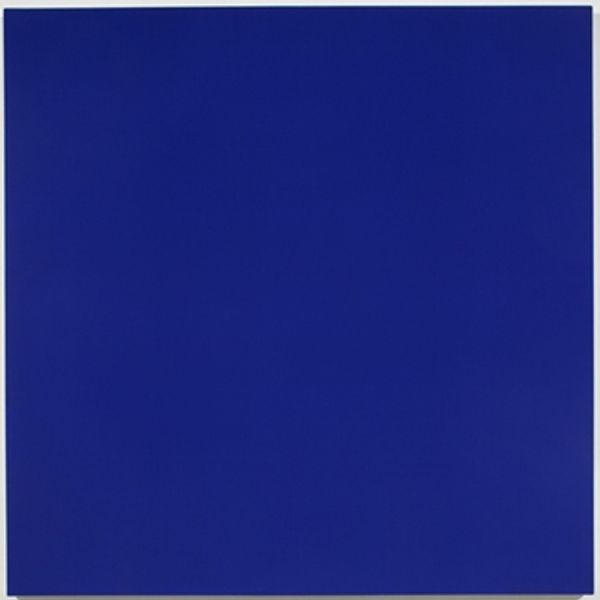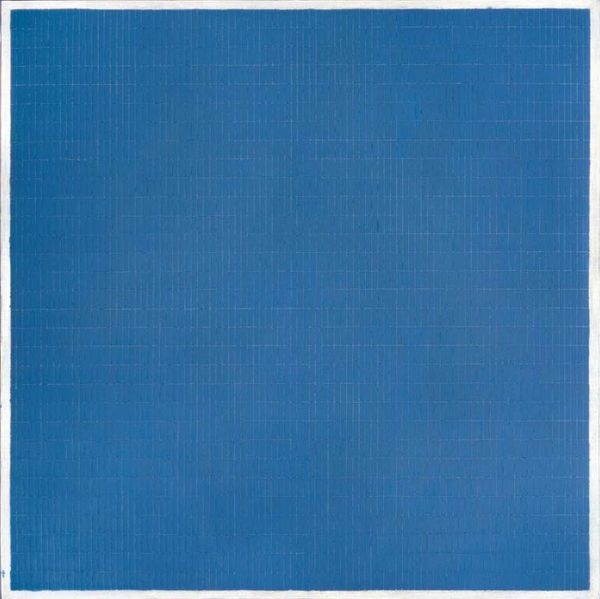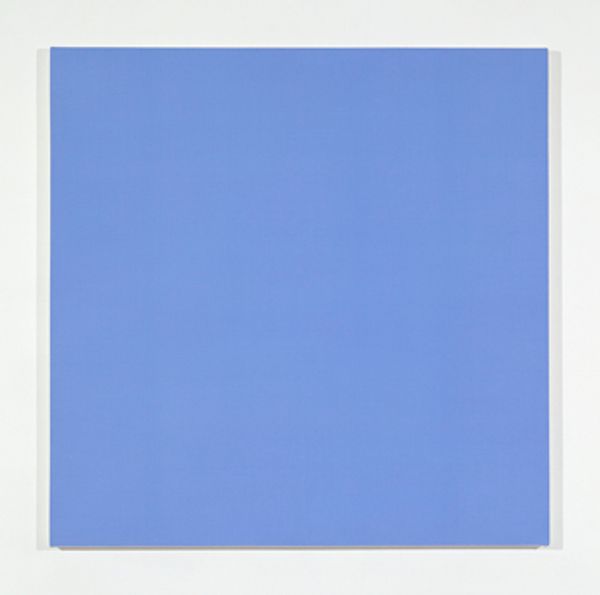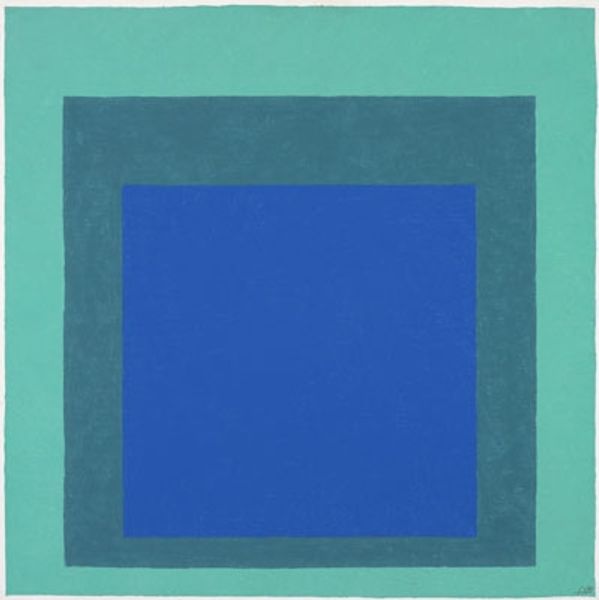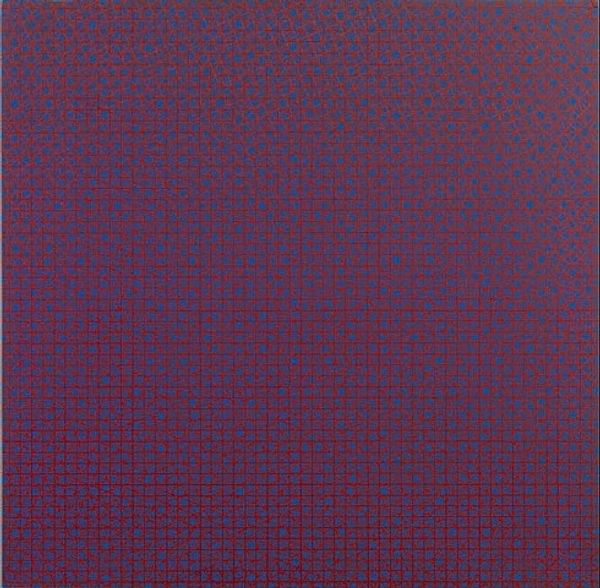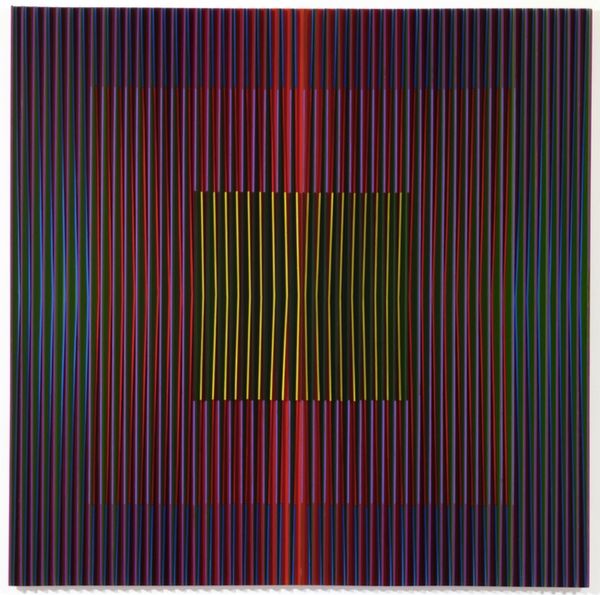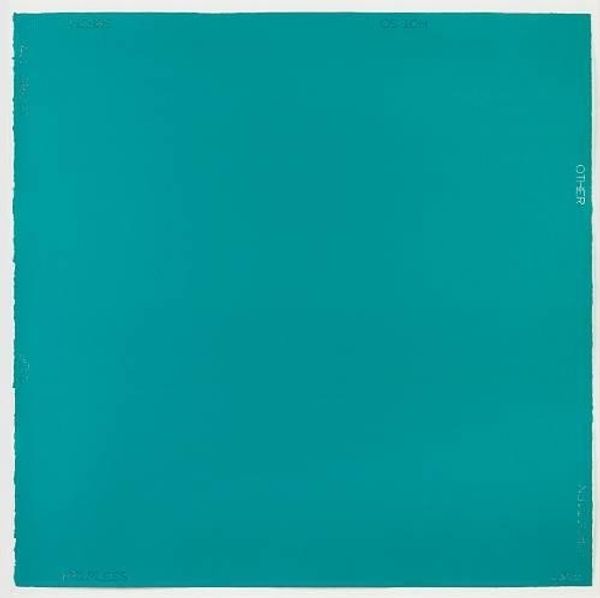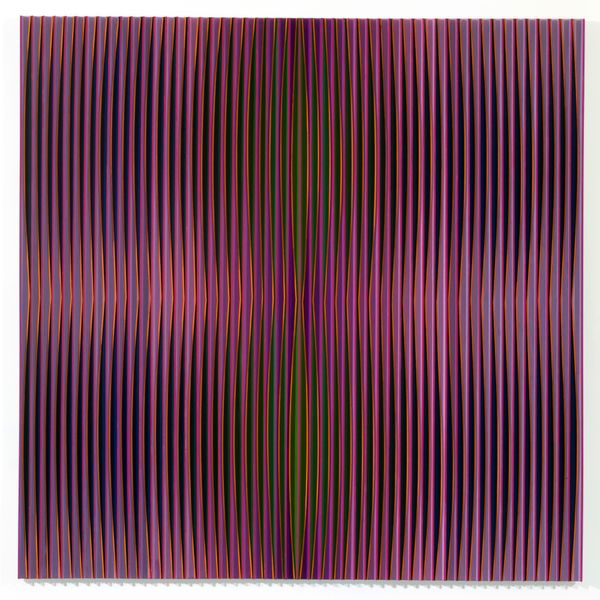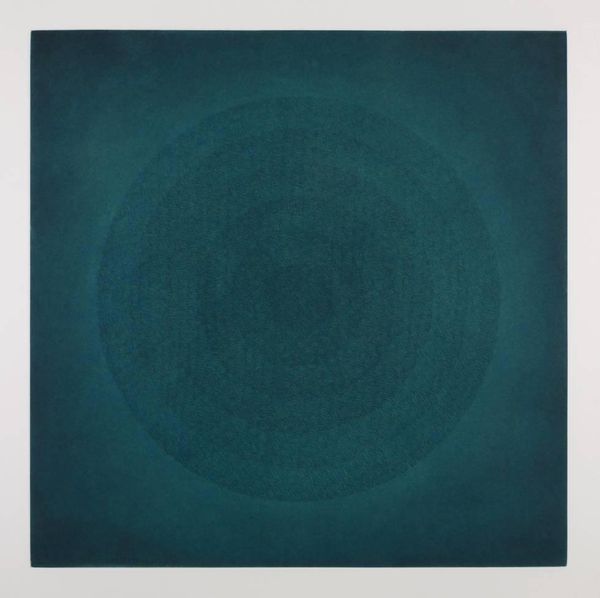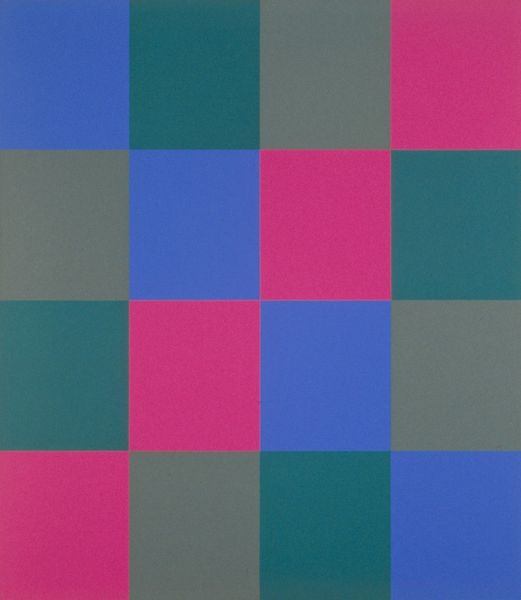
Dimensions: sheet: 83.82 × 83.82 cm (33 × 33 in.)
Copyright: National Gallery of Art: CC0 1.0
Editor: This is "Filtration Eleven," a 1977 print by Julian Stanczak. All those blue squares kind of shimmer. It gives me a cool, almost detached feeling. What do you see in this piece? Curator: I see Stanczak using color to create a really specific kind of optical experience, but it's important to remember the historical moment. In the 1970s, conversations around Minimalism and Color Field painting were evolving. Stanczak's work can be seen as engaging with, and perhaps subtly critiquing, the seeming neutrality of those movements. Does the gradient from darker blues to lighter hues strike you as politically neutral? Editor: I guess not, now that you mention it. It’s too… purposeful. Like it’s trying to manipulate my perception. Curator: Precisely. Consider the word "filtration" in the title. What are we, as viewers, filtering out, and what are we allowing to pass through? And what systems of power are already at play? Stanczak isn't just playing with optics; he's implicating us in a visual power dynamic. How does this reading resonate with your initial impression of detachment? Editor: It adds a layer of discomfort. The “cool” feeling becomes less about calm and more about a sort of enforced distance, maybe? Curator: Exactly. And in that distance, we can start to examine the underlying structures of seeing and being seen. The work becomes an activist prompt in its own way, no? Editor: Definitely! I'll never see Op Art the same way. Thanks for shedding light on this work and how art can address deeper social issues. Curator: My pleasure! Hopefully, more viewers will find these types of artworks that invite reflection on power and visibility.
Comments
No comments
Be the first to comment and join the conversation on the ultimate creative platform.

